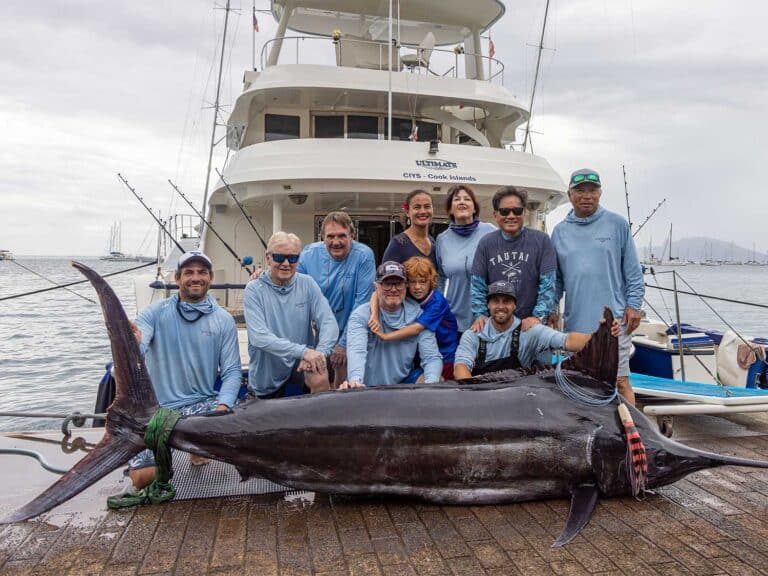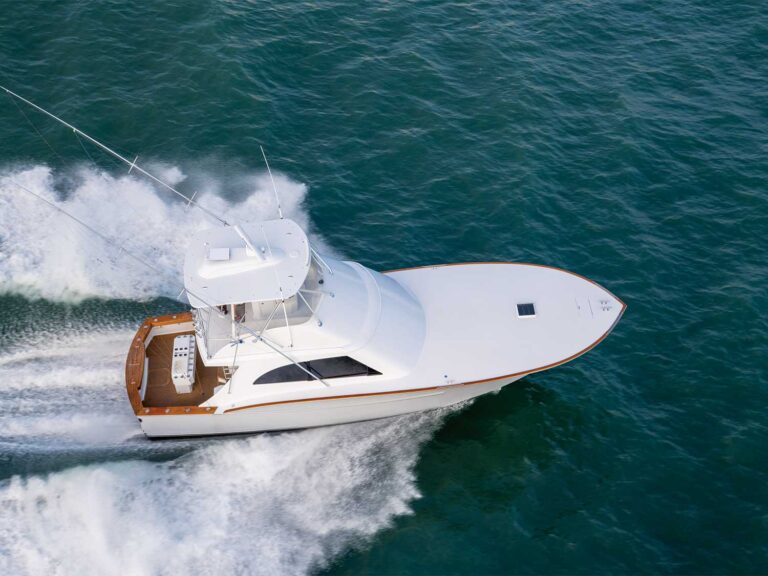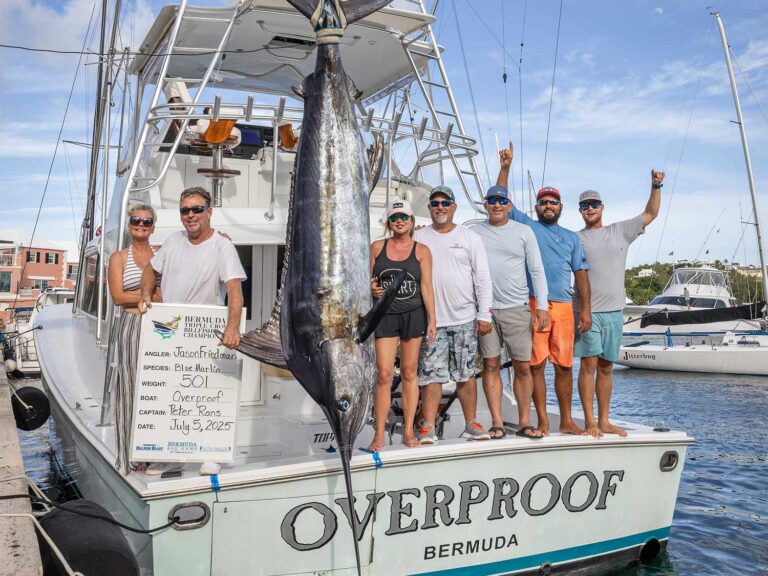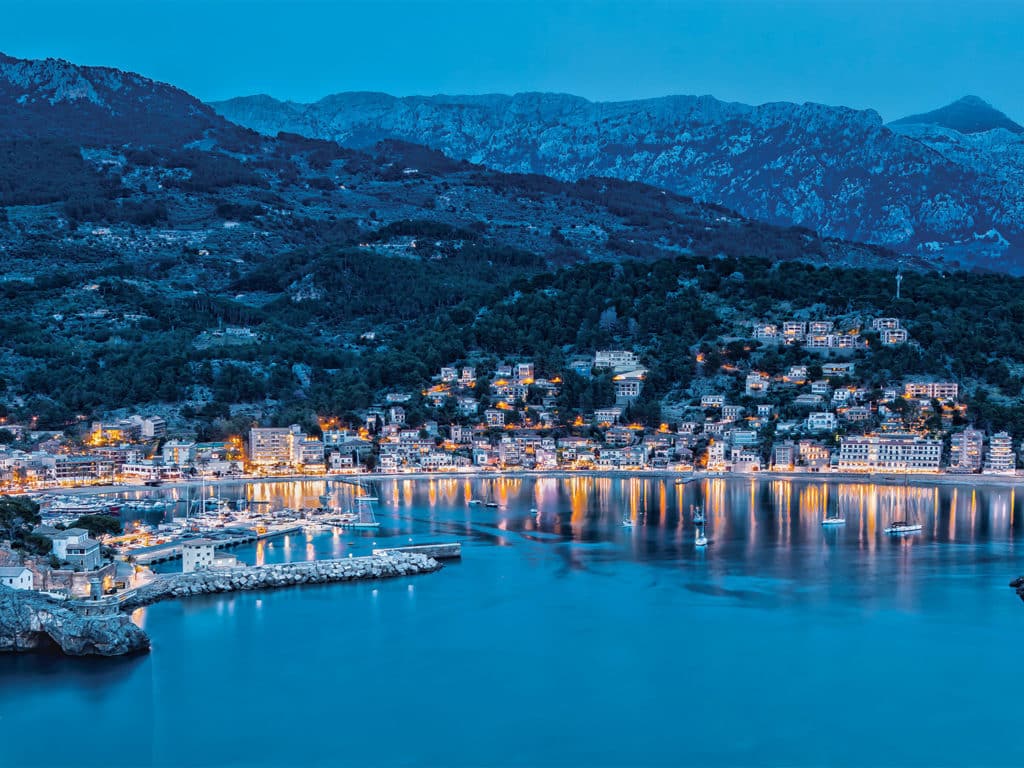
It was a little after 6:30 a.m. when Capt. Vince Riera backed the 49-foot Tiara Mad Max from its berth at Port de Alcudiamar Marina and headed into the 50-mile-wide Majorca Channel, a tongue of deep blue water that separates Majorca from her sister, the Balearic island of Menorca. It was just over an hour’s run to reach an area about which I had heard so much—time to savor some freshly brewed coffee and still-warm-from-the-oven croissants until we arrived at that very special area where Riera is in the process of making bluewater sport-fishing history.
About a mile away from the actual waypoint, we slowed to trolling speed and set our spread of lures: long and short, left and right, a shotgun down the middle, and a diving wobbler in each corner. The day had been planned to help me achieve an eagerly anticipated personal goal, and I had been told that the first strike was mine. So with the extreme anticipation that all anglers feel at the start of another fishing day in a new part of the world, I sat back and watched the lures working in our wake.
Less than five minutes later, the left short dipped suddenly and the reel made a throaty cough as a few yards of line pulled from the spool. I jumped up from my seat ready to grab the rod, but when nothing appeared to be happening, I sat back down. Moments later the same rod bent over again, only this time line continued to pour steadily off the reel. I grabbed the rod and held on, waiting for that first blistering run to ease, calmly assuming that I was hooked up to one of several species of tuna that thrive in these waters. Then, perhaps 150 yards in our wake, a silver saber launched itself into the air in the first of an impressive series of acrobatics, at which point Riera called out, “Spearfish!” Speechless and no longer calm, my pulse raced as the realization hit me that within minutes of lines in, I had hooked the fish I had flown to Majorca hoping to catch: the little-known Mediterranean spearfish.
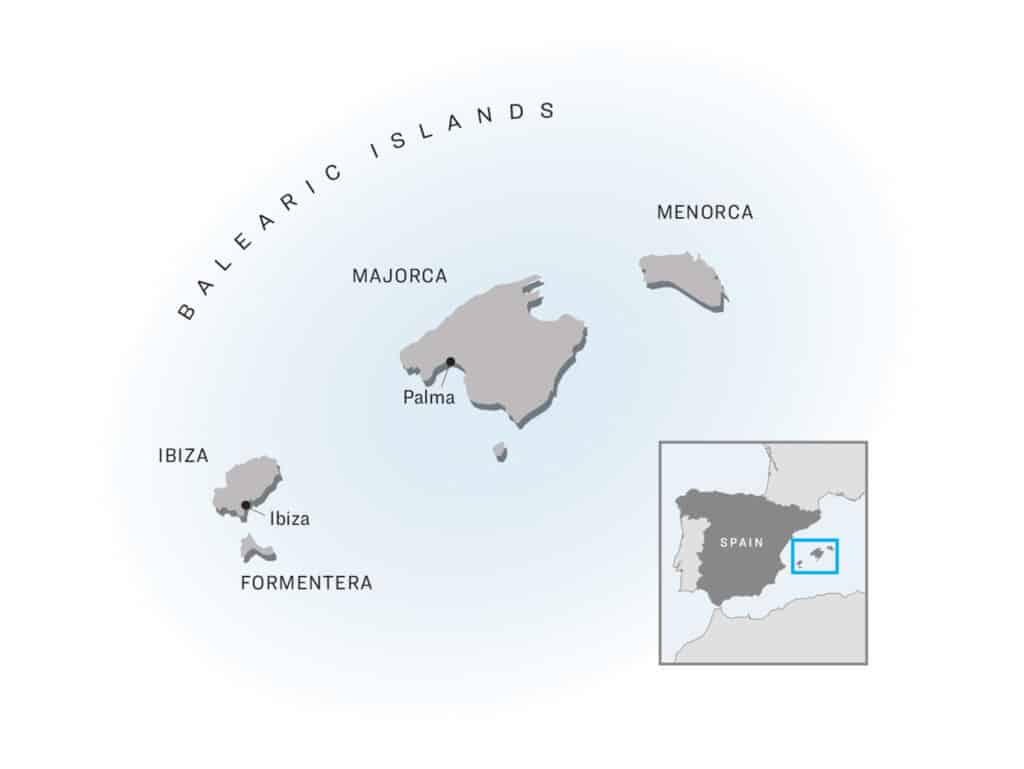
The Journey Begins
This particular expedition to Majorca, off the Spanish coast, actually began in the early 1990s during a visit to the original Malindi Fishing Club in Kenya. At the time, the club was based in a wonderfully nostalgic old building perched on the waterfront adjacent to the fish market. This was the place where, after a long day on the water, skippers and anglers would gather to enjoy a cold beer or two. Among the many faded old black-and-white photographs, mounted fish, and trophies that adorned the walls of this historic club that dates back to colonial times, I noticed a poster illustrating the various species of billfish found around the world. I remember being particularly intrigued by the image of Tetrapturus belone, the Mediterranean spearfish; was this a species of billfish I could target within a short two-hour flight from my home in Wales, United Kingdom? That question stayed with me for a very long time.
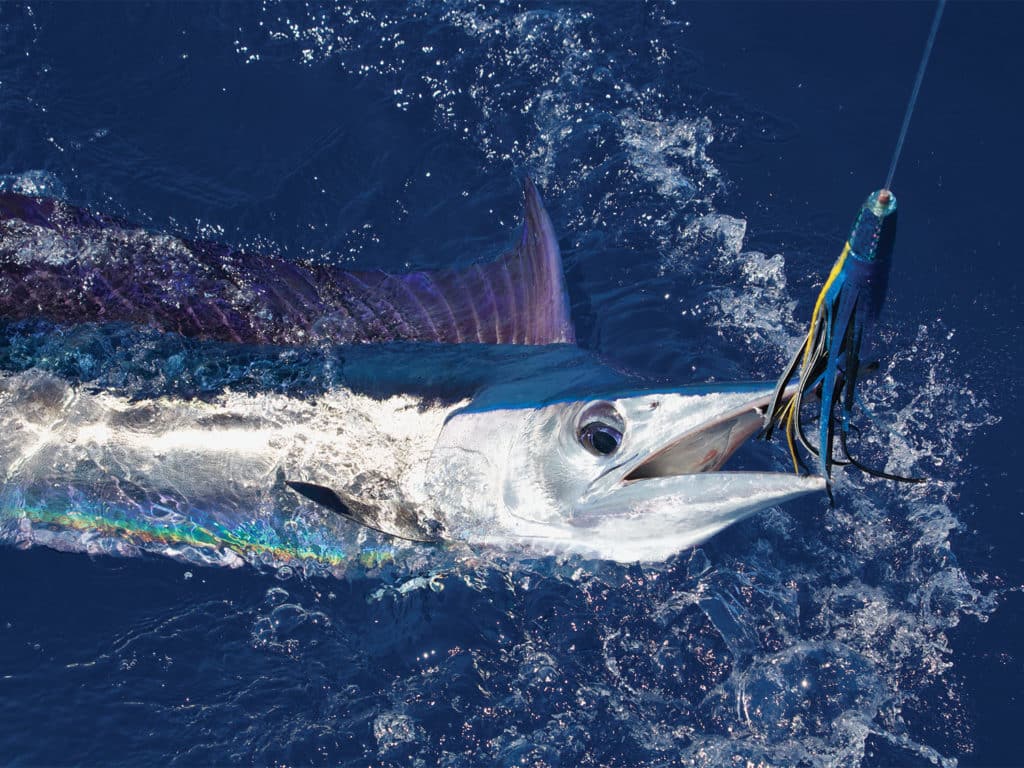
Over the following years, as the pages of my passport filled steadily with numerous entry stamps and visas, I gradually worked my way through the major species of billfish, eventually arriving at the point where I needed to catch only a white marlin and a spearfish to complete the much-coveted IGFA Billfish Royal Slam. On several occasions throughout this global journey, I had fished at locations around the Mediterranean, and always I had asked about the possibilities of catching a spearfish. Invariably the answer I received had been along the lines of, “Yes, it is possible to catch a spearfish; most years they catch one or two, but it is not probable.” Spearfish are an elusive species caught only now and then, they all said, and the spears were nearly impossible to specifically target.
“Yes, it is possible to catch a spearfish; most years they catch one or two, but it is not probable.”
A few years back, I came into contact with Majorca-based Riera. Majorca is a hugely popular holiday destination for Europeans, and consequently throughout the summer months, cheap flights to the island are available from pretty much any regional airport. I was aware that the tuna fishing—mostly bluefin and albacore—around the island was good, and I had been exploring the possibility of flying down to fish a few days with Riera. Along with a steady stream of images of tunas, swordfish and other species he started to send me, I noticed that he was not infrequently catching spearfish. I mentioned this to him, explaining that I’d dearly love to catch one, to which I received the utterly unexpected response of, “If you want a spearfish, come to Majorca—you’ll catch one!” A series of phone calls followed, during which I made plans to travel there to fish for spearfish in summer 2020; then along came COVID-19, and plans to travel anywhere ground to an unfortunate halt.
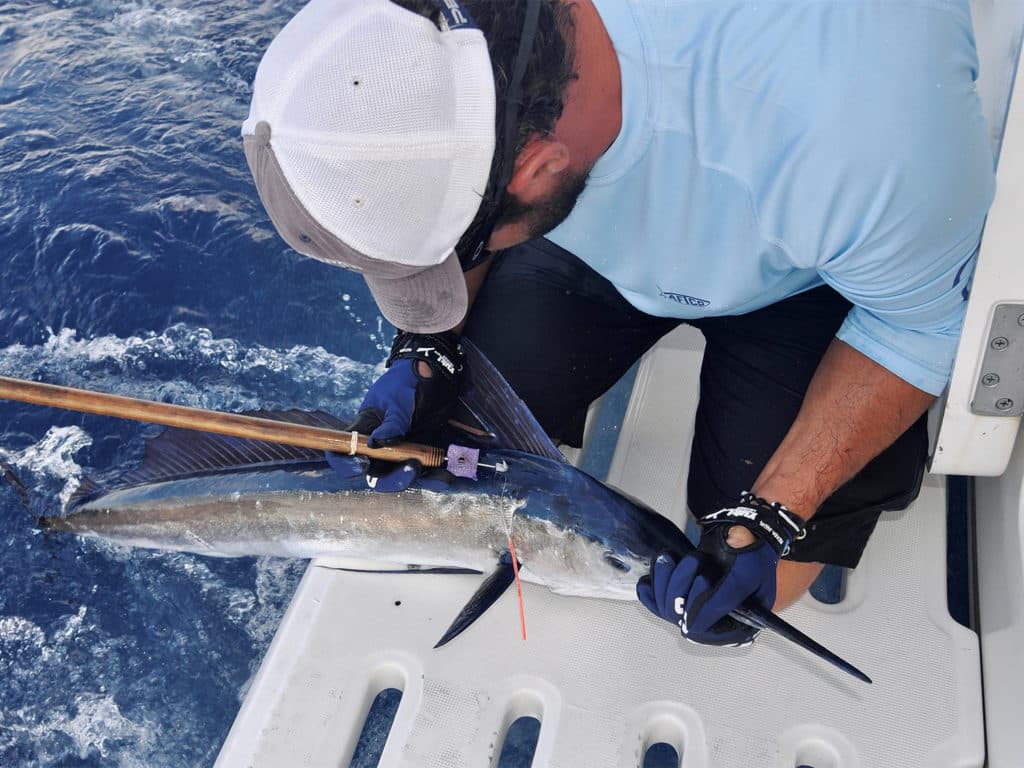
Overcoming the Challenges
A good friend of Riera’s, Jurgen Oeder, had also noted the seemingly higher than usual number of spearfish that were being caught in the waters around Majorca. Oeder, one of the most experienced bluewater anglers in Europe and author of several books, had put it to Riera that if he was able to target spearfish with anything better than a slim chance of success, then undoubtedly there were many anglers around the world who would travel to the island specifically to attempt to catch one. Riera’s response had been emphatic: He had fished the area all of his life, and yes, he knew where and when to fish for spearfish. They were, he said, a relatively small fish, and as far as Majorcans were concerned, spearfish were not good to eat, so they were released. Tunas were abundant, and the anglers who fished with him either wanted to fight a large bluefin or possibly a swordfish, or otherwise catch albacore or other species they could take home.
To understand just why the waters around the Balearic Islands, and Majorca in particular, are so productive for so many pelagic species, you need only to study a chart covering the western Mediterranean. At its closest point to the island, the drop-off is only a little over 3 miles from the southeast coast, where the average water depth of 300 feet rapidly falls away to more than 3,000 feet, and in some places as much as 6,000 feet.
Pushing eastward into the Mediterranean through the Pillars of Hercules, more commonly known as the Straits of Gibraltar—the narrow channel that separates North Africa from mainland Europe—cold, nutrient-rich water from the Atlantic collides with the drop-off south of the Balearic Islands, resulting in a series of whirlpool-like currents that are deflected in a generally northerly direction through the channel between Majorca and Menorca.
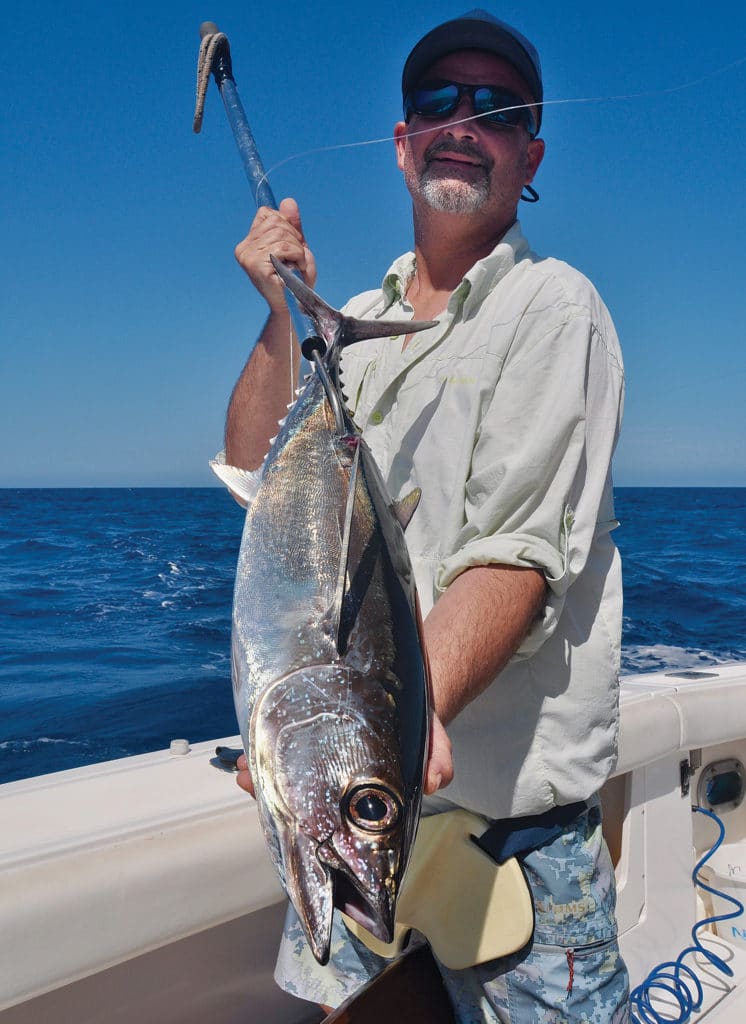
The bottom topography throughout much of this area consists of numerous deep canyons and underwater mountains, which further deflect the currents. Toward the northern end of the islands, the cold water collides with a warm-water current, flowing in a southerly direction from mainland Europe. The resulting mix is a powerful trigger that sets in motion a rich food chain, which begins with plankton and results in vast shoals of baitfish that are sufficient to sustain the incredible numbers of tunas and other pelagic species that congregate here.
These circumstances have not gone unnoticed, and various organizations have recognized the importance of the area. Dr. Sylvia Earle, founder and chairman of the Sylvia Earle Alliance and Mission Blue, has named the Balearic Islands a Hope Spot—a special place worth safeguarding as a marine protected area for its importance to the health of the Mediterranean Sea. International conservation organization Oceana has proposed that in order to properly protect the marine habitats and species around the Balearic Islands, new marine protected areas must be established to create a representative marine-protected-area network, and that, within existing MPAs, fishing restrictions must be tightened. New no-take zones must be created because the Balearic Islands contain ecologically and economically important waters that support bluefin tuna spawning areas, biologically diverse submarine mountains and canyons, and threatened and endangered species. Currently there are seven declared marine reserves in the Balearic Islands, covering 18 percent of inland waters. I like to think of the Balearic Islands as being as important to the Mediterranean as the Galapagos Islands are to the Pacific.
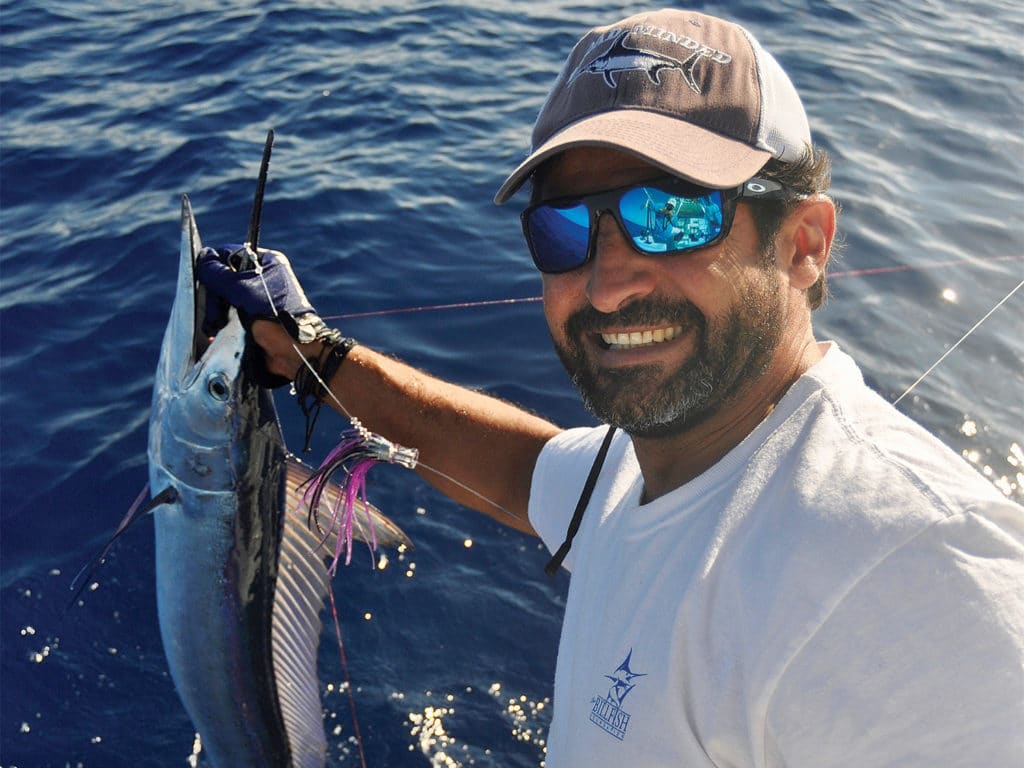
A Developing Fishery
Riera has tagged bluefin tuna for many years and has on several occasions recaptured tuna he had previously tagged; incredibly he has caught one fish on an amazing three separate occasions. Not only is this firm evidence that proved that if they are handled correctly, tuna can be released in a healthy condition, but also that the Balearic Islands have a resident, or at least semiresident, population of fish. Encouraged by Oeder in 2020, Riera started tagging spearfish for The Billfish Foundation, which is very interested in learning more about this species. Despite minimal fishing effort so far as a result of the pandemic, as of early August 2020, the Mad Max team had tagged an incredible 11 spearfish. Even more impressive is the fact that on seven consecutive occasions when he targeted spearfish, Riera successfully tagged one.
“I can guarantee that at certain times of the year, we will get at the very least a strike from a spearfish,” he confidently explained when I spoke to him on the phone. As far as I am aware, the only other area in the world with such a high probability of a spearfish encounter is Hawaii.
On our run to the area where Riera planned to begin the day, I asked him which lures and tactics he had found to be most effective. “We fish 16- and 30-pound-class outfits, as the average size of spearfish we catch is around 20 pounds,” he said. “We could fish lighter, but our objective is to tag and release each fish as quickly as possible, plus we almost always hook several species of tunas, including bluefin.
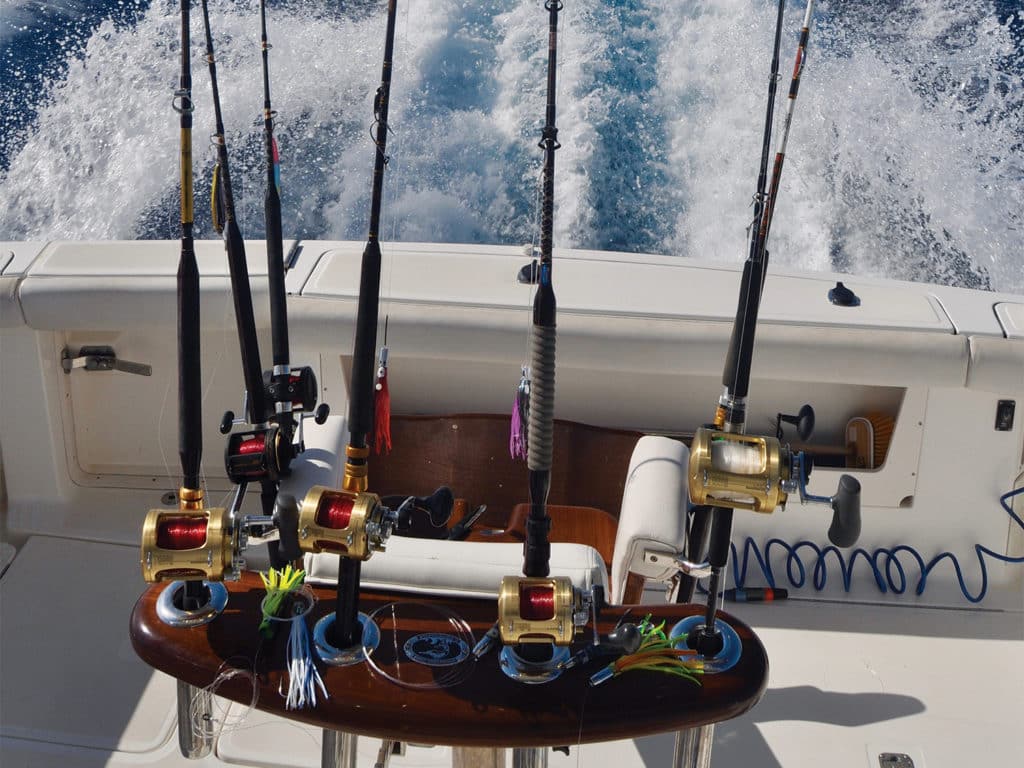
“We’ve caught spearfish on pretty much all of the lures we use,” he continued. “Originally these were simply bycatch when fishing for tunas, but now that we have started to specifically target spearfish, our spread typically includes small jet heads with a heavy metal head. The fish seem to like lures that create a strong bubble trail and track just below the surface. This year we’ve caught two spearfish on a multicolored diving lure made by Halco—it’s an ugly one that we’ve named the Clown, but who cares what it looks like as long as it’s getting strikes?”
Riera also told me that he encounters spearfish in a relatively small area, and that he fishes there only when a client wants to catch a spearfish. As soon as this has been achieved, he moves on. Spearfish are caught all around the island, and he has found a few other areas where the bite average is more than just occasional, and with further exploration, it is highly likely even more spots will be located. Often he even sees spearfish free-jumping.
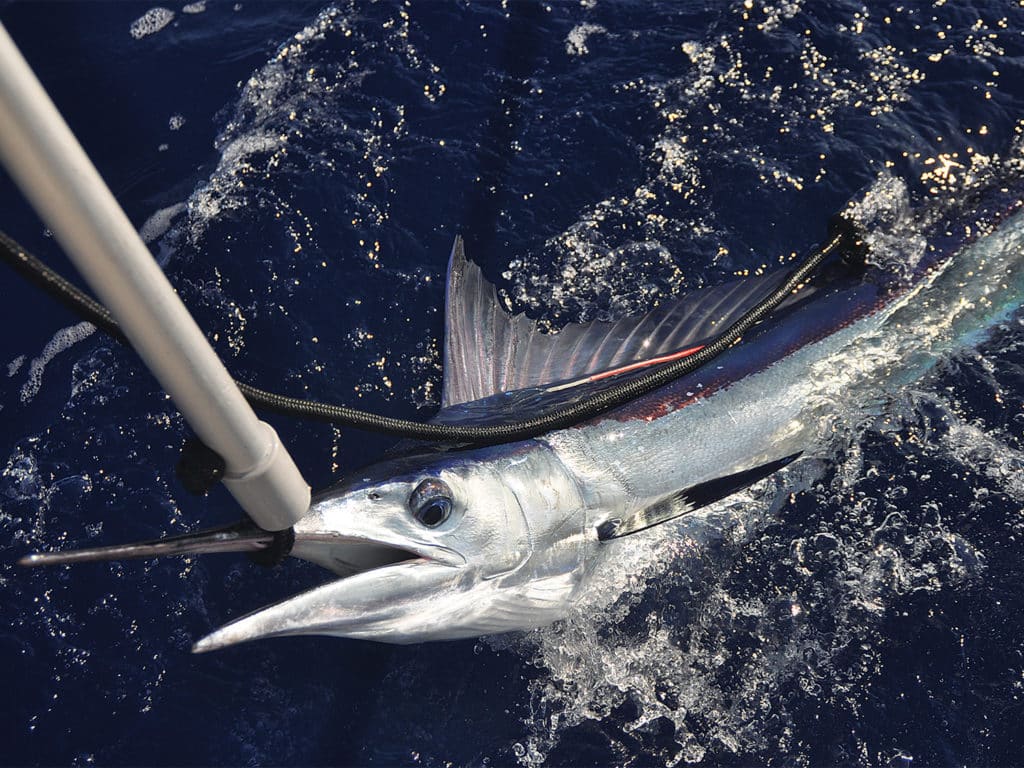
Spears and Swords
So I hooked my dream fish within five minutes on the first day of my trip. I’ve hooked enough billfish over the years to know that they can throw the hook at any stage of the fight, especially when fishing with lures, so I remained as taut as a drum skin until Riera leaned over the side, grabbed the leader, and secured my fish’s short bill with a snooter to keep it in the water while we tagged and revived it.
Several months after my trip to Majorca, The Billfish Foundation notified Riera that he was the top tagging captain for spearfish in the Atlantic Ocean for 2020. Despite scant few fishing days due to COVID restrictions, and most clients wanting to target tunas rather than spearfish, Riera had successfully tagged a total of 12 spearfish, which included seven in seven consecutive fishing days. And the incredible Majorcan billfish story doesn’t end there. In fall 2020, Riera and a few friends, including Oeder, made an exploratory trip to fish a few new areas in order to ascertain their potential for swordfish. The results were incredible: They tagged and released five swords from 11 bites in just one night.
“The results were incredible: They tagged and released five swords from 11 bites in just one night.”
The optimal time to fish for spearfish in Majorca is from mid-May through the end of August. Bluefin tuna are caught from April until October, with the biggest fish averaging 400 to 500-plus pounds arriving in mid-May prior to spawning. Albacore are caught in June and July, and huge little tunny are caught from spring until fall. The best time to target swordfish—averaging anywhere between 20 and 200 pounds— is either April and May or again in September and October, day or night.
Majorca gets extremely busy during the summer months. Certain parts of the island, such as Magaluf in the south, will not be to everyone’s taste; think Cancun or Cabo during spring break. Thankfully there are many towns that have managed to retain their traditional charm, and certainly Alcudia is one of these. A visit to the old walled town on market day, Tuesday, is a must. You’ll find an abundance of great restaurants throughout the island, many specializing in locally caught seafood. Be sure to try the classic Spanish specialty, paella. Accommodations range from cheap and cheerful to five-star. Riera offers a self-catering apartment located next to the marina, within easy walking distance to numerous great restaurants.
From the United States, your trip will begin with a flight to either Madrid or other Western European capital, from where you’ll take a short connecting flight to the city of Palma. Certainly, if you live anywhere east of the Rockies, it will likely be quicker—and possibly much cheaper—to travel to Majorca rather than Hawaii to target these billfish.
The Mad Max team successfully tagged a spearfish on each of the next three days I was in Majorca. If you would like to add one of these incredibly beautiful, yet inherently elusive, species to your lifetime catch list, you know where to go.




